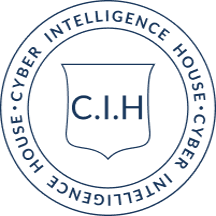In business school and executive education, participants consistently ask about “leveraging” AI in their businesses and “creating value” through AI. That’s natural – who wouldn’t want to discover how to accomplish more with modern tools? But what happens after these statements is often what I call lazy thinking. So let’s unpack what it actually means to have competitive advantage now that different AI models provide performance multipliers across all industries.
Everyone can benefit from these powerful tools, but just because you can personally get more done doesn’t mean you can sit back, enjoy, and reap the benefits.
What’s often left out of these first intuitions is that if you can be 10%, 20%, 100%, even 500% more efficient in your current job – so can everybody else!
Consider a financial controller, the trusted person in an organization who checks spreadsheets from sales and suppliers each week and provides key metrics to management about how the business is performing. These metrics have proven essential because this particular person is so good at their job that management can trust them to provide early warning if there are any indications of problems that need close examination and corrective action.
Now if this person uploads the same spreadsheets into a frontier model, asks a specific prompt, and sends the output to management, you might think they got the job done faster and now have more time to play golf or pursue any other hobby of their choice. That’s fundamentally wrong.
If a file is uploaded, a prompt is entered for processing, and output is treated as-is, there’s very little value added in that process. Previously, this person might have spent several days looking at the numbers and consciously or unconsciously going through a meticulous process of comparing certain ratios and trends based on previous experience. That’s why this particular person gained such a good reputation as the most trusted analyst or advisor to management.
Now if that whole process is replaced by a prompt, it would be more efficient for management to submit that prompt to the model themselves without bothering anybody else. If that prompt is the secret sauce for success, there’s not much to defend. It’s only a matter of time before that person is no longer needed.
To add a little “moat” to the process and value to the job, the person in question can do more than just prompt a model. They can take the output and review it carefully. This already adds some value – the heavy lifting is done by a frontier model, but there’s still an experienced expert checking the output. More defendable, but also not for very long.
Expanding the concept further, the expert can create a playbook for how to analyze data, how to apply learnings from the past, highlight particularly important aspects, suggest certain formulas, and still check the outcome before submitting it to management. This approach has even more “moat” and we might talk about defendability of several months up to a year.
Going further, the expert can now have more time and start processing historical data using more advanced statistical methods that they simply didn’t have time for before, leading to a better playbook than they could have ever created. This approach not only has a better moat but also improves performance beyond previous capability.
Making it a continuous process and widening the scope from one particular spreadsheet to an entire business function has even more moat and delivers even more value.
The term I like to use when teaching is information inflation. Just because you type something into a frontier model chatbox doesn’t necessarily mean you created more value. In absolute terms, yes you did. However, the baseline is a moving target. The rule of thumb is that if anybody can do it, it doesn’t add any relative value. You need to discover how to use your knowledge and skills to improve the process beyond your current capabilities. Only that process counts.
In academia, we define competitive advantage with terms like “ability to produce supranormal profits over time.” It means you can produce more profits than your peer group over a certain period. That’s why doing the bare minimum isn’t enough – it’s most likely less than what the rest of the market is doing.



